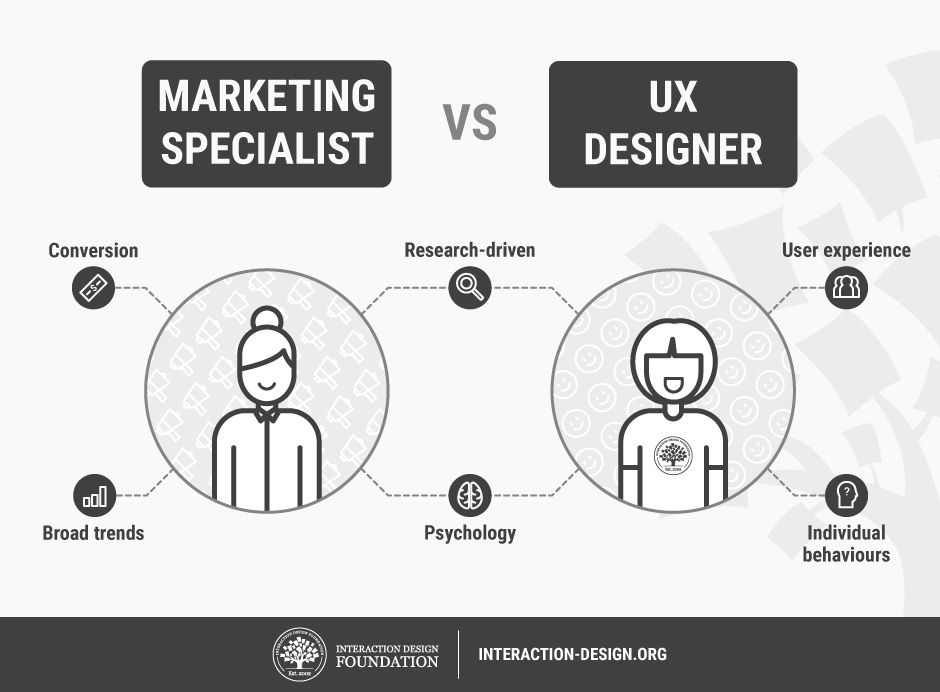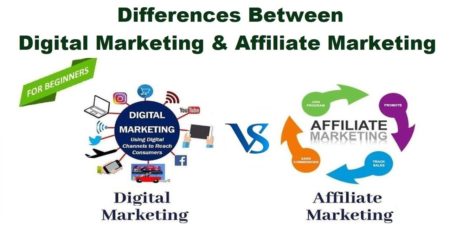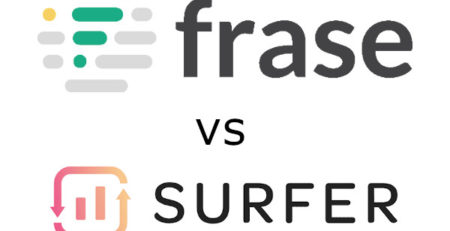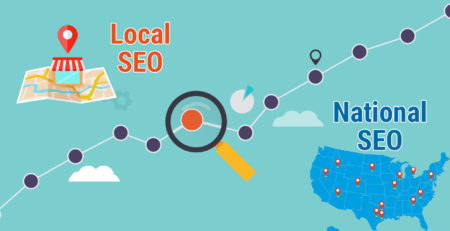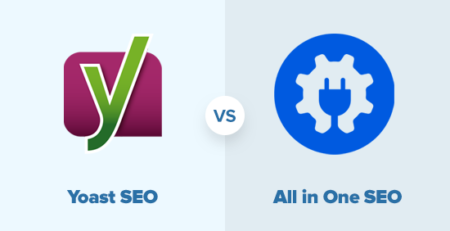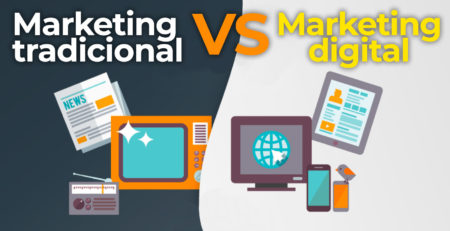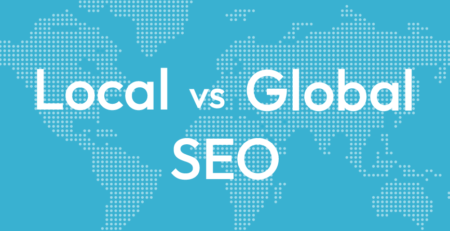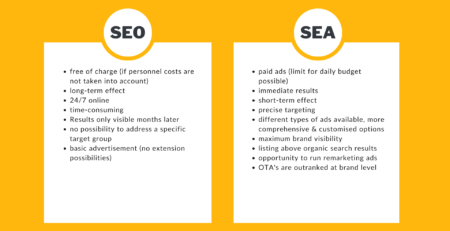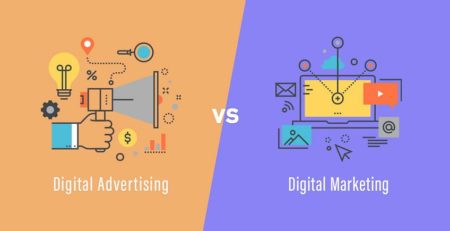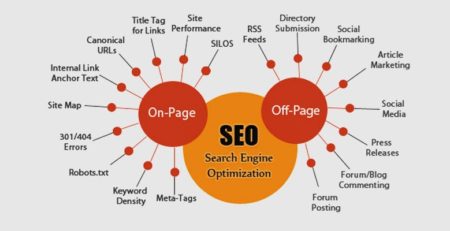Digital Marketing Vs Ux Design: What’s The Difference In 2023?
Digital Marketing Vs Ux Design: Which Is Right for You?
So, you’re stuck deciding between digital marketing and UX design, huh? Don’t worry, I’ve got your back! Let’s break it down in a way you can easily understand.
Picture this: you’re a digital marketing whiz, a master of creating captivating content and spreading it far and wide. But on the other hand, you could be a UX design wizard, crafting seamless user experiences that leave everyone in awe. Tough choice, right? Fear not, my friend, we’ll explore both paths and help you make an informed decision.
Before we dive in, let me tell you one thing: both digital marketing and UX design are exciting fields with endless possibilities. Whether you want to be the voice behind brands or the creative mind behind user-friendly interfaces, it’s all about finding the right fit for your strengths and passions. So, let’s explore each option and see which one lights up your inner spark. Are you ready? Let’s go!
When it comes to digital marketing and UX design, there are several key differences to consider. Let’s compare 5 important features between the two:
| Target Audience | Digital Marketing: Focuses on reaching a wide range of potential customers. | UX Design: Aims to improve user experience through research and user-centered design. |
| Goals | Digital Marketing: Seeks to increase brand visibility, generate leads, and drive sales. | UX Design: Strives to enhance usability, increase engagement, and create intuitive interfaces. |
| Metrics | Digital Marketing: Measures success through metrics like website traffic, click-through rates, and conversions. | UX Design: Evaluates success by analyzing user satisfaction, task completion rates, and usability testing. |
| Strategy | Digital Marketing: Relies on various channels like social media, SEO, and email marketing to reach the target audience. | UX Design: Focuses on understanding user needs, conducting research, and designing user-friendly interfaces. |
| Expertise | Digital Marketing: Requires skills in market research, copywriting, analytics, and SEO. | UX Design: Requires skills in user research, information architecture, interaction design, and usability testing. |
Key Takeaways: Digital Marketing vs UX Design
1. Digital marketing focuses on promoting products or services online, while UX design focuses on creating user-friendly experiences on websites and apps.
2. In digital marketing, strategies like SEO and social media advertising are used to drive traffic and increase conversions, while UX design ensures a seamless and enjoyable user experience.
3. Digital marketing involves analyzing data and metrics to optimize campaigns, while UX design involves understanding user needs and conducting user research to improve the usability of digital products.
4. Both digital marketing and UX design are important for businesses to succeed in the online world, as they work together to attract and retain customers.
5. While digital marketing brings in traffic, UX design ensures that visitors have a positive experience and are more likely to convert into customers.
Comparing Digital Marketing vs. UX Design
Digital Marketing and UX Design are two crucial aspects of the modern digital landscape. While they serve different purposes, they both play significant roles in the success of online businesses. In this article, we will compare and contrast Digital Marketing and UX Design to understand their key features, user experience, pros and cons, and price points. We’ll explore the similarities and differences between the two and ultimately determine which is better in the context of online business.
Overview of Digital Marketing
Digital Marketing encompasses various strategies and tactics aimed at promoting products or services through digital channels. It involves leveraging online platforms, such as search engines, social media, and email, to reach a target audience and drive engagement. Digital Marketing focuses on enhancing brand visibility, generating leads, and increasing sales through effective online campaigns.
Overview of UX Design
User Experience (UX) Design, on the other hand, is the process of creating digital interfaces that are user-friendly, visually appealing, and intuitive. It involves understanding user behavior, conducting research, and designing interfaces that provide a seamless and enjoyable experience for users. UX Design focuses on optimizing interactions, navigation, and accessibility to create meaningful and engaging digital experiences.
Key Features Compared
When comparing Digital Marketing and UX Design, several key features stand out. Let’s take a closer look at each one:
Target Audience
In Digital Marketing, identifying and understanding the target audience is crucial. Marketers analyze demographics, interests, and online behavior to create targeted campaigns that resonate with their intended audience. By tailoring messages and content specifically to the target audience, Digital Marketing aims to maximize reach and engagement.
In UX Design, understanding the target audience is equally important. Designers conduct user research to gain insights into user expectations, preferences, and pain points. By understanding the target audience’s needs and motivations, UX Designers can create user interfaces that cater to their specific requirements, resulting in a more enjoyable and satisfying experience.
Content Strategy
Digital Marketing heavily relies on content creation and distribution. Marketers develop content strategies that align with the brand’s goals and target audience. This includes creating engaging and valuable content, such as blog posts, videos, and social media posts, to attract and retain customers. The content strategy in Digital Marketing aims to drive traffic, generate leads, and build brand authority.
In UX Design, content strategy focuses on delivering the right information at the right time to users within the interface. Designers consider the user’s journey and ensure that the content presented is clear, concise, and relevant. By structuring and organizing content effectively, UX Designers aim to improve usability and facilitate the user’s understanding and decision-making process.
Metrics and Analytics
Digital Marketing relies heavily on data and analytics to measure campaign performance and make data-driven decisions. Marketers track various metrics, such as website traffic, conversion rates, click-through rates (CTR), and return on investment (ROI), to gauge the effectiveness of their marketing efforts. By analyzing these metrics, Digital Marketers can optimize strategies and allocate resources more effectively.
In UX Design, metrics and analytics play a crucial role in understanding how users interact with the interface. Designers use tools like heat maps, user recordings, and usability testing to gather data on user behavior, preferences, and pain points. By analyzing this data, UX Designers can identify areas for improvement and make informed design decisions to enhance the user experience.
User Experience
When it comes to user experience, both Digital Marketing and UX Design are essential in shaping the overall user journey.
Digital Marketing focuses on creating engaging and personalized experiences for users through targeted advertisements, compelling content, and effective landing pages. By understanding the user’s needs and motivations, Digital Marketers can provide relevant and valuable information that meets their expectations, leading to higher engagement and conversion rates.
On the other hand, UX Design focuses on optimizing the interaction and usability of digital interfaces. UX Designers consider factors such as ease of navigation, intuitive interfaces, and visually appealing designs to ensure a seamless and enjoyable user experience. By prioritizing user-centered design principles, UX Design aims to create interfaces that are easy to use, visually appealing, and meet the needs of the target audience.
Ultimately, a successful digital experience requires the synergy of both Digital Marketing and UX Design. While Digital Marketing attracts users and generates leads, UX Design ensures that the user’s journey within the interface is smooth, frictionless, and delightful.
Pros and Cons
Let’s take a closer look at the pros and cons of Digital Marketing and UX Design:
Digital Marketing:
Pros:
– Wide reach and potential to target specific audiences
– Ability to measure and track campaign performance
– Opportunity to build brand awareness and authority
Cons:
– High competition and saturated market
– Reliance on ad platforms and constant algorithm changes
– Potential for ad fatigue and banner blindness
UX Design:
Pros:
– Improved user satisfaction and engagement
– Enhanced brand perception and loyalty
– Higher conversion rates and customer retention
Cons:
– Time-consuming design process
– Strict adherence to usability principles may limit creative freedom
– Technical limitations and compatibility issues across devices
Price Comparison
In terms of pricing, both Digital Marketing and UX Design can vary significantly depending on the scope and complexity of the project. Digital Marketing costs typically include advertising budgets, content creation fees, and agency fees, if outsourcing. The cost of Digital Marketing can be flexible, allowing businesses to adjust their budgets based on their goals and desired reach.
On the other hand, UX Design costs involve research, wireframing, prototyping, and UI design. UX Design services are often charged on an hourly or project basis, and the cost can vary depending on the experience level and reputation of the designer or design agency.
It’s important to consider that investing in both Digital Marketing and UX Design can yield long-term benefits for businesses. While Digital Marketing drives traffic and generates leads, UX Design ensures that those leads have a positive experience and are more likely to convert into customers.
Comparison Table
Feature Digital Marketing UX Design
Target Audience Identify and understand target audience Conduct user research to understand user behavior and preferences
Content Strategy Create and distribute engaging content Develop content strategy for effective information delivery
Metrics and Analytics Track website traffic, conversion rates, ROI Analyze user behavior and usability metrics
User Experience Enhance engagement and conversion through tailored experiences Optimize usability and create enjoyable interfaces
Price Flexible depending on ad spend and agency fees Varies based on project scope and designer rates
Which is Better – Digital Marketing vs. UX Design
Deciding which is better between Digital Marketing and UX Design ultimately depends on the goals and priorities of the business. Both play critical roles in the success of online businesses, but the emphasis may vary depending on the stage of the business and its target audience.
For businesses looking to establish an online presence and generate leads, Digital Marketing is crucial. It allows businesses to reach a wider audience, build brand awareness, and drive conversions through targeted campaigns. With the right marketing strategies and effective content, businesses can achieve significant growth and success.
On the other hand, UX Design is essential for businesses that prioritize user satisfaction and aim to create delightful experiences. For businesses that heavily rely on digital interfaces, such as e-commerce platforms or web-based applications, investing in UX Design ensures that users have a seamless and enjoyable experience, leading to higher engagement, customer retention, and brand loyalty.
While Digital Marketing and UX Design serve different purposes, they are interconnected and mutually beneficial. An effective digital marketing strategy drives traffic and generates leads, while UX Design ensures that those leads have a positive experience, leading to higher conversion rates.
In conclusion, both Digital Marketing and UX Design are vital components of a successful online business. However, the choice between the two depends on the specific goals and priorities of the business. By considering the target audience, content strategy, metrics, user experience, and price points, businesses can tailor their approach to maximize results. Ultimately, the best approach lies in incorporating elements of both Digital Marketing and UX Design to create a comprehensive and successful online presence.
3 Reasons to choose Digital Marketing:
– Wide reach potential and ability to target specific audiences.
– Measurable and trackable campaign performance.
– Opportunity to build brand awareness and authority.
3 Reasons to choose UX Design:
– Enhanced user satisfaction and engagement.
– Higher conversion rates and customer retention.
– Improved brand perception and loyalty.
Remember, investing in both Digital Marketing and UX Design can yield significant long-term benefits for businesses in today’s digital landscape.
Frequently Asked Questions
Welcome to our FAQ section on Digital Marketing and UX Design. Here are some common questions people have regarding these two fields and their differences.
1. How is digital marketing different from UX design?
Digital marketing focuses on promoting products or services through various online channels, such as social media, search engines, and email marketing. Its goal is to drive traffic, generate leads, and ultimately increase sales or conversions. On the other hand, UX design is centered around creating a user-friendly and enjoyable experience for website or application users. The focus is on understanding user behavior, designing intuitive interfaces, and optimizing the overall user experience.
While both fields work towards improving the digital realm, digital marketing focuses on promotion, whereas UX design focuses on enhancing the user’s experience. Digital marketers are concerned with reaching the right audience and driving conversions, while UX designers prioritize user satisfaction and usability.
2. Can digital marketing benefit from UX design principles?
Absolutely! Implementing UX design principles in digital marketing can greatly enhance its effectiveness. By applying user-centered design principles, digital marketers can create landing pages and campaigns that resonate with their target audience. A seamless user experience can improve website conversions, increase customer loyalty, and drive positive word-of-mouth publicity.
For example, a digital marketer can collaborate with a UX designer to ensure that a landing page is visually appealing, easy to navigate, and loads quickly on all devices. UX design principles like clear calls-to-action, intuitive navigation, and readable fonts can significantly improve the effectiveness of digital marketing efforts.
3. How do digital marketing and UX design work together?
While digital marketing and UX design have different focuses, they are closely intertwined. A comprehensive digital marketing strategy leverages UX design principles to optimize user experiences, resulting in higher conversion rates and improved customer satisfaction. By understanding user behavior and preferences, digital marketers can tailor their campaigns and content to target specific audience segments effectively.
Furthermore, UX designers can benefit from digital marketing insights to create user-friendly designs that align with marketing goals. Collaborating with digital marketers can help UX designers understand audience demographics, market trends, and customer pain points, enabling them to deliver user experiences that meet both functional and promotional objectives.
4. Can you pursue a career in both digital marketing and UX design?
While digital marketing and UX design require different skill sets, it is certainly possible to pursue a career in both fields. Many professionals have successfully blended these disciplines and found rewarding roles that encompass both digital marketing and UX design responsibilities.
Having a strong foundation in one area and a working knowledge of the other can be highly advantageous. For example, a digital marketer with UX design skills can create more impactful campaigns by considering the user’s perspective throughout the marketing funnel. Similarly, a UX designer with digital marketing knowledge can create designs that are not only visually appealing but also align with marketing objectives.
5. Which field offers more career opportunities, digital marketing, or UX design?
Both digital marketing and UX design offer excellent career opportunities, and the demand for professionals in these fields continues to grow. The choice between the two ultimately depends on your interests, strengths, and career goals.
Digital marketing encompasses a wide range of roles, including social media marketing, search engine optimization, content marketing, and more. If you enjoy networking, analyzing data, and developing creative marketing strategies, digital marketing may be the right choice for you.
On the other hand, if you have a passion for user research, creative problem-solving, and designing user interfaces, UX design may be a better fit. UX designers can work in various industries, including technology, e-commerce, finance, and healthcare, improving user experiences across different platforms.
Career Advice – Marketing and UX/CX – Evan Carroll
Summary
So, to sum it all up, digital marketing and UX design are both important in the online world. Digital marketing focuses on promoting products and services through various online channels, like social media and email marketing. UX design, on the other hand, is all about creating the best possible experience for users when they interact with websites or apps.
In this article, we learned that digital marketing helps businesses reach a wider audience and increase their online presence. It involves strategies like search engine optimization (SEO) and paid advertising to attract and engage customers. UX design, on the other hand, ensures that users have a seamless and enjoyable experience on websites and apps. It involves creating user-friendly interfaces, intuitive navigation, and visually appealing designs.
By understanding the importance of both digital marketing and UX design, businesses can create a strong online presence while providing a great user experience. Remember, digital marketing helps attract customers to a website, while UX design keeps them engaged and satisfied once they are there. So, whether you’re interested in promoting products or designing websites, both digital marketing and UX design play vital roles in today’s digital landscape.

